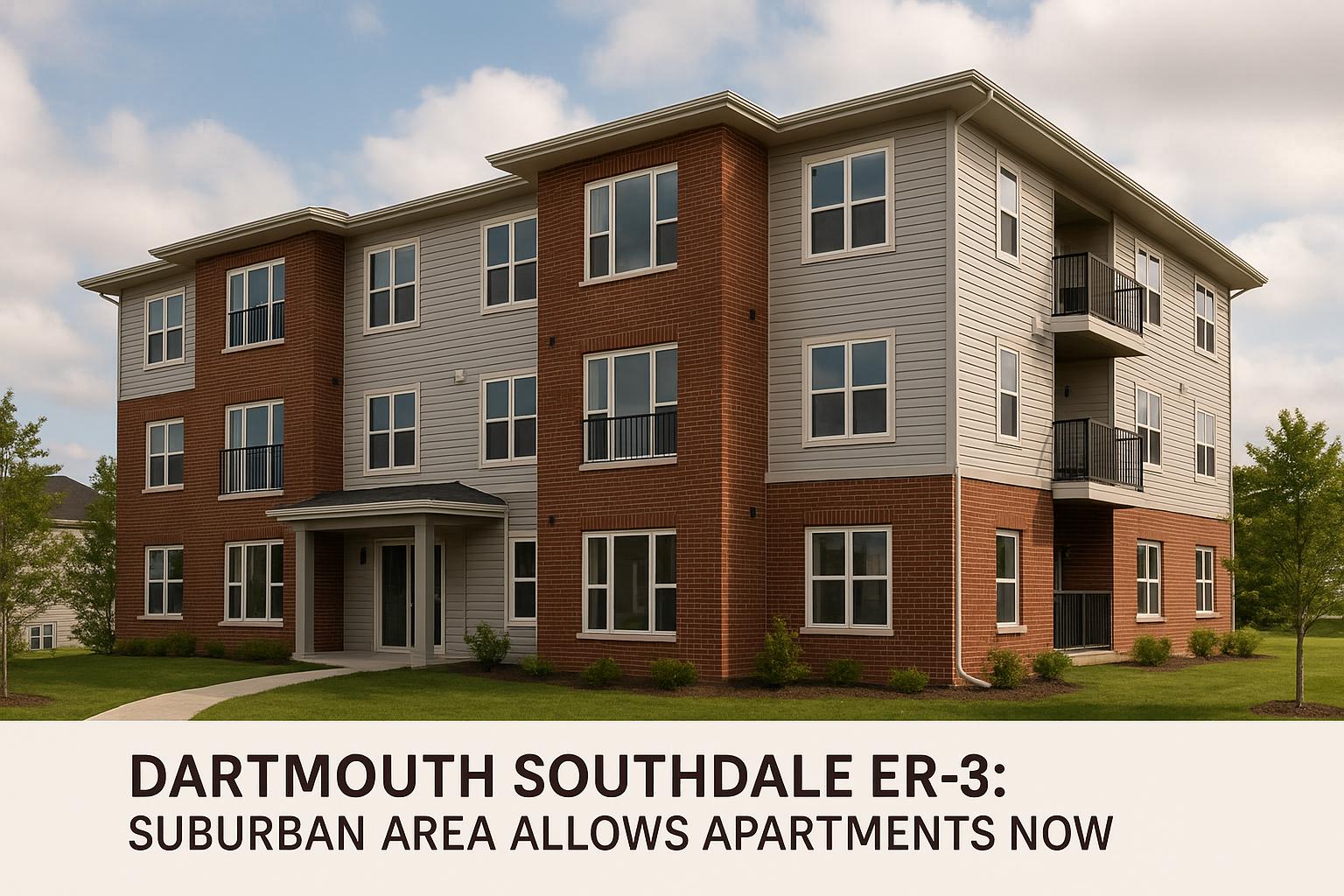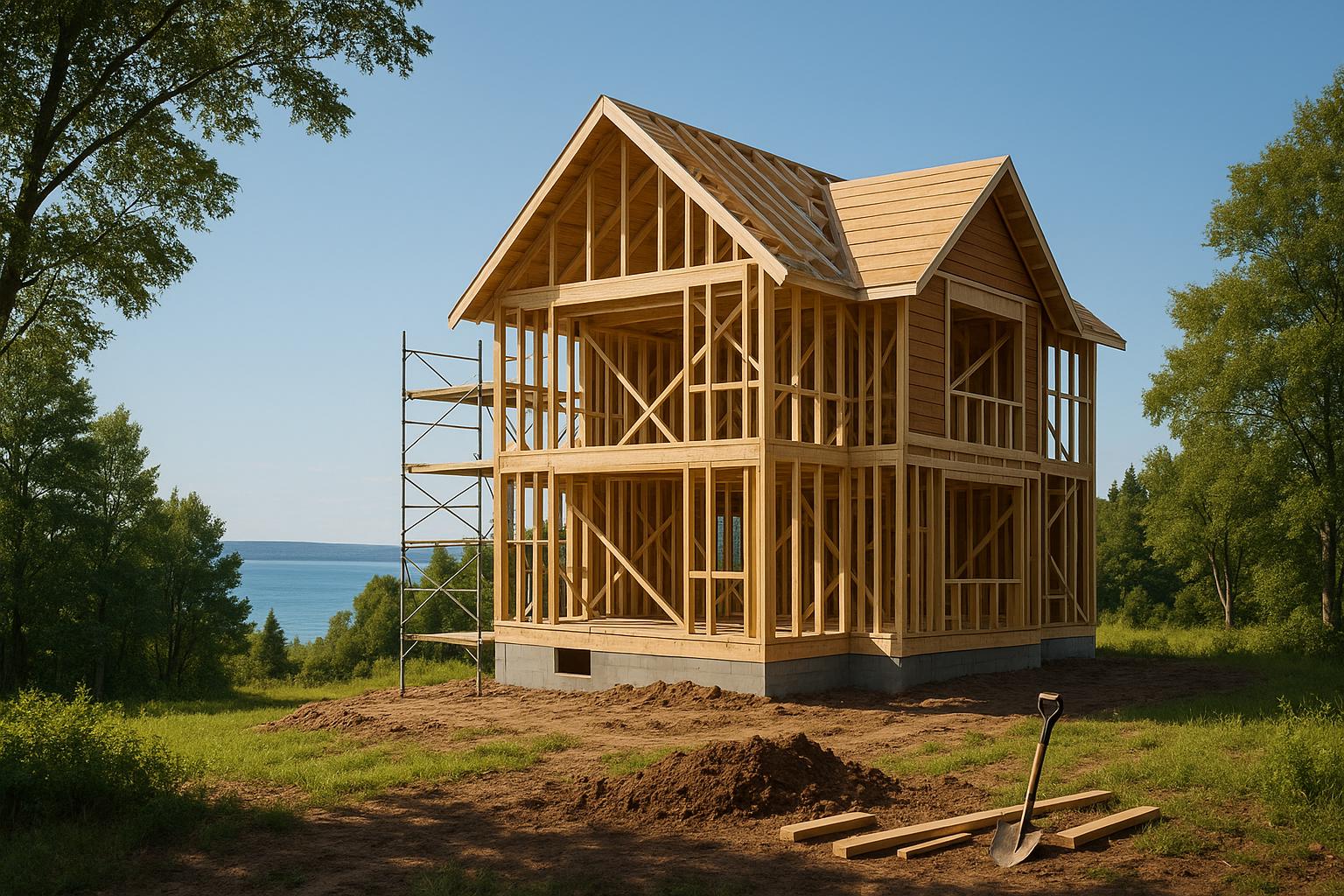Secondary suites are a great way to add space and generate rental income in Nova Scotia while addressing the housing shortage. These self-contained units can be built in basements, above garages, or as detached backyard suites. Recent updates to provincial regulations and new funding programs make it easier for homeowners to create these spaces, aligning with Nova Scotia’s 2025–26 budget priorities for affordable housing.
Key Benefits:
- Earn rental income or house family members.
- Increase your property’s value.
- Help ease the housing shortage in your community.
What You Need to Know:
- Regulations: Suites must have a private entrance, a full kitchen, and meet safety standards.
- Permits: Check zoning rules, building codes, and apply early for permits.
- Funding: New provincial incentives are available - details can be found on the Nova Scotia government website.
Whether you're renovating a basement or building a backyard suite, secondary suites offer a practical solution for homeowners and renters alike. Keep reading for tips on design, permits, and maximizing the potential of your property.
Nova Scotia offering $40K loans for backyard housing
Secondary Suites Explained
Secondary suites play a key role in Nova Scotia's approach to housing. These are self-contained living units located within or beside a main residence. Each suite comes with its own kitchen, bathroom, and entrance - making it fully independent. Specific details about these features will be covered in later sections.
Common Suite Types
Here are some typical layouts for secondary suites:
Basement Apartments
These suites are built in the basement of a home. They require adequate ceiling height, a dedicated entrance, and proper waterproofing to ensure safety and comfort.
Above-Garage Suites
These are either newly constructed or converted spaces built above a garage. They offer a private living area separate from the main house.
Backyard Suites
Also called garden suites, these detached units are constructed on the same property as the primary residence. They provide privacy and can serve various purposes, from rental units to home offices.
The next section will explore the updated regulations that apply to these types of suites in Nova Scotia.
Nova Scotia Rules and Changes
Recent changes to regulations have simplified the process of adding secondary suites in the province.
Basic Requirements
- A private entrance and fully equipped kitchen
- Compliance with building codes and fire safety standards
Usage Options
Secondary suites are versatile and meet a variety of needs. They can serve as rental properties, in-law suites for extended family, accessible spaces for older adults, or affordable housing solutions. By offering homeowners additional flexibility and rental income opportunities, these units also help address housing shortages.
These updated standards lay the groundwork for the permitting and design steps, which will be discussed in upcoming sections.
Rules and Permit Requirements
If you're planning to add a secondary suite to your property, it's essential to understand the municipal rules and safety standards involved. Here's a breakdown of what you need to know to stay compliant.
City and Town Rules
Start by checking your municipality's zoning, lot, and parking regulations. For example, Halifax Regional Municipality provides resources like the Shape Your City Halifax hub, where residents can find detailed information about planning policies and decisions [2].
Some key municipal considerations include:
- Ensuring your property is in a zone that permits secondary suites (most residential zones do).
- Meeting specific lot size and parking requirements, which differ between municipalities.
- Following local rules for separate entrances to the suite.
Building Safety Standards
Safety is a top priority when creating a secondary suite. You’ll need to meet the following requirements:
- Install proper fire separation between units.
- Use interconnected smoke alarms and, if necessary, carbon monoxide detectors.
- Ensure emergency exits and egress windows are in place.
Additionally, the suite must have good ventilation and access to natural light. These safety measures are not only essential for occupant well-being but are also critical for the permit approval process.
Getting Permits
Here’s how to navigate the permit process for your secondary suite:
-
Pre-Application Research
Start by confirming zoning bylaws, building codes, and permit requirements with your local planning department. -
Required Documentation
Prepare and submit a complete site plan, along with detailed construction drawings. These should include specifics on electrical, plumbing, and fire safety features. You’ll also need to provide proof that your plans meet fire safety standards. -
Professional Consultation
Collaborate with professionals like architects, designers, building inspectors, or contractors to ensure your plans align with all building codes and standards.
It’s a good idea to begin the permit application process well ahead of your construction timeline, as approval times can vary depending on your municipality.
Nova Scotia's Funding Program
The 2025-26 budget introduces incentives for building secondary suites, aiming to make housing more affordable and strengthen local communities [1].
Program Details
This initiative seeks to reduce living expenses while improving neighbourhood safety. Although the full details of the program are yet to be released, it’s intended to complement existing housing strategies and potentially increase property values.
Who Can Apply
Specific eligibility requirements haven’t been shared yet. Homeowners keen on applying should visit the official Nova Scotia government website or get in touch with their local housing authority for the most up-to-date information. Up next, we’ll dive into practical tips for planning and constructing secondary suites to make the most of these incentives.
sbb-itb-16b8a48
Planning and Building Tips
When designing a secondary suite in Nova Scotia, focus on safety, comfort, and meeting local regulations. Here’s some advice to help guide your planning.
Basement Unit Guidelines
A solid foundation is key. Start by waterproofing the foundation, adding a vapour barrier, and ensuring proper drainage to prevent moisture issues.
To address noise concerns, consider these soundproofing measures:
- Add sound-dampening insulation between floor joists.
- Install resilient channels for drywall ceilings to reduce sound transmission.
- Apply acoustic sealant around electrical boxes and any penetrations.
- Use solid-core doors to help block noise.
For comfort and compliance, make sure your basement has a minimum ceiling height of 2.1 metres, as required for habitable spaces.
These steps can also serve as a foundation for planning detached suites.
Backyard Unit Basics
For detached backyard suites, placement is crucial. Position the suite to comply with setback requirements and ensure it blends well with the overall property layout. Remember to maintain the municipal-mandated distance from property lines to avoid zoning issues.
Money Matters
Secondary suites aren't just about extra space - they can also bring in notable financial benefits through various avenues.
Monthly Income Potential
The rental income from a secondary suite depends on factors like location, size, layout, and amenities. For example, an urban unit in Halifax with perks like in-suite laundry or a private entrance can fetch higher rents, while rural suites often bring in less. On top of monthly earnings, having a legal secondary suite can also boost your property's overall market value.
Boosting Property Value
A legal secondary suite can make your home more appealing to buyers by adding both functionality and income potential. Factors that influence this value increase include:
- Quality construction and attractive finishes
- A location close to amenities and workplaces
- Modern utilities and separate services for the suite
Savings for Family Housing
If you use a secondary suite to house family members, you can save significantly on living costs compared to options like long-term care facilities. A well-designed, legal suite offers a flexible and affordable housing solution, helping to cut down overall expenses while keeping loved ones close.
Next Steps
Starting your secondary suite project involves a few key steps to get everything on the right track:
- Check Municipal Guidelines: Reach out to your local planning department to confirm zoning rules and building standards in your area.
- Explore Funding Options: Visit the Government of Nova Scotia website to review details about the Secondary Suite Incentive Program, including eligibility requirements [1].
- Consult Professionals: Connect with licensed contractors and architects who have experience working on secondary suite projects.
Before you begin construction, make sure to address the following:
- Obtain all required building permits.
- Ensure fire safety measures like proper separation and emergency exits.
- Confirm utility connection requirements.
- Review neighbourhood parking regulations.
These steps will help you secure the necessary permits and stay compliant with local regulations. If you're in Halifax, the Shape Your City Halifax portal [2] offers extra resources to guide you through the process.
For more detailed information, check out the "Housing, property and community" section on the Government of Nova Scotia's website [1]. It covers renovation requirements and tenant protection guidelines, helping you move smoothly from planning to execution.
FAQs
What are the eligibility requirements for Nova Scotia’s funding program to build secondary suites?
The Nova Scotia government provides a forgivable loan of up to $40,000 - covering 50% of the project cost - to help homeowners build secondary suites. To qualify, the property must be owner-occupied, the suite must either house family members or serve as an affordable rental, and the project must be completed within nine months.
This initiative offers homeowners a chance to boost their income or create adaptable living spaces while contributing to the province's housing needs. Make sure to review the full program details to check your eligibility and understand all requirements.
What steps should homeowners take to ensure their secondary suite meets local building and fire safety standards in Nova Scotia?
To make sure your secondary suite aligns with Nova Scotia's building and fire safety standards, it must comply with the provincial building code. Some of the key requirements include having proper egress windows for safe exits, fire separation (like a 30-minute fire-rated ceiling between the suite and the main house), and interconnected smoke alarms to boost safety.
Before starting construction or legalizing an existing suite, you’ll need to secure a building permit. Collaborating with professionals such as architects or contractors can help you navigate the regulations and keep your project on track. Focusing on safety and compliance ensures the space is both secure and comfortable.
What financial benefits and property value increases can homeowners in Nova Scotia expect from adding a secondary suite?
Adding a secondary suite to your home in Nova Scotia can be a smart way to boost your finances. Take Halifax Regional Municipality (HRM) as an example: a modest secondary suite in this area can rent for around $900 to $1,200 per month, which adds up to more than $10,000 a year in rental income. This extra cash flow can make a big difference when it comes to covering mortgage payments or other household expenses.
On top of that, having a legal secondary suite can increase your property’s value. Homes with rental units are appealing to buyers who want both flexibility and an investment opportunity. This makes adding a suite not just a short-term income boost but also a savvy long-term move for your financial future.
Related Blog Posts
- Small Multi-Unit Development 101: Building Duplexes and Fourplexes in Nova Scotia
- Secondary Suites and Backyard Homes in Halifax: Adding Value with New Housing Options
- Multigenerational Living in Nova Scotia: Designing a Custom Home for Your Whole Family
- Renovate or Rebuild? Deciding the Fate of Older Homes in Nova Scotia



